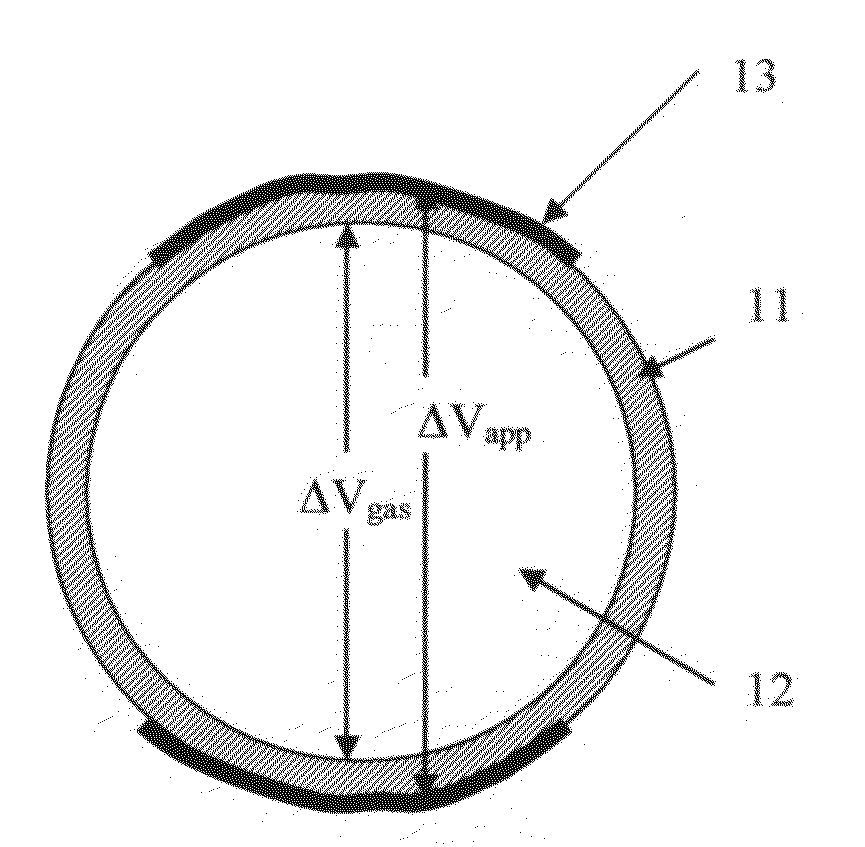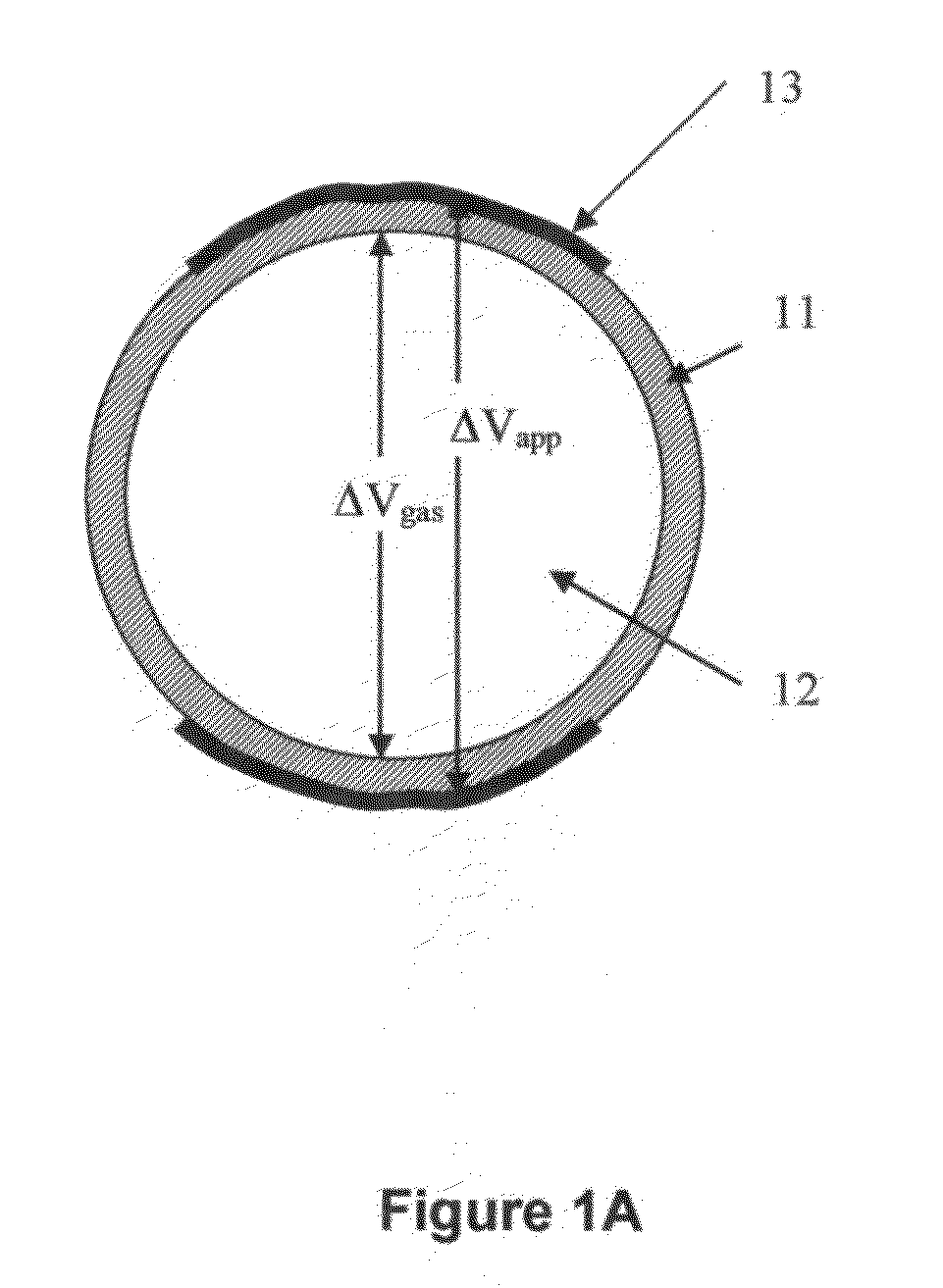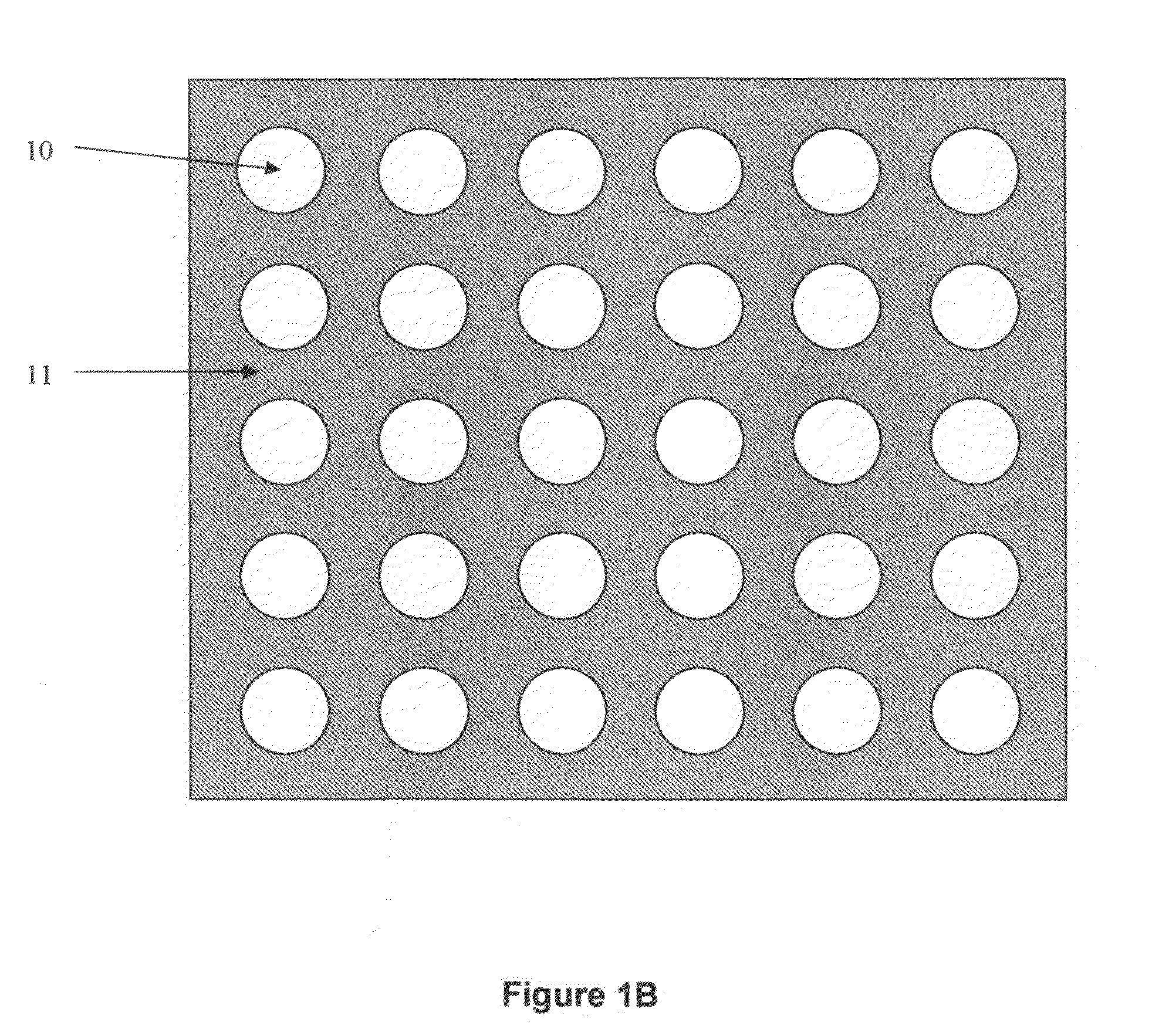Neutron detector
a neutron detector and detector technology, applied in the field of neutron detectors, can solve the problems of not being able to provide a directional estimate in three-dimensional space, the performance of most neutron detectors is well below the theoretical limit, and the performance of most neutron detectors is not optimal for their intended use, so as to improve the discrimination capability and improve the use efficiency of moderator materials.
- Summary
- Abstract
- Description
- Claims
- Application Information
AI Technical Summary
Benefits of technology
Problems solved by technology
Method used
Image
Examples
example 1
[0071]Applicants constructed a number of dielectric sensors consisting of gas-filled spherical balloons 10 (i.e. having an outer shell 11 and a hollow interior 12 filled with gas). Based on calculations of electrical conductivity, particle transport and energy deposition, and long-term gas retention, the sensors had an outer diameter of 7 mm with 200 μm thick glass walls 11. The interior 12 of each sensor was filled with a gas mixture consisting of 3×105 Pa 3He and 5×105 Pa Ar. This combination of gas composition, gas pressure, and sensor size was sufficient for most 3He neutron capture events to deposit much or all of the energy released from the neutron capture reaction (in the form of energetic reaction products) in the sensor gas. Simultaneously, the combination of sensor size and gas pressure or density was low enough such that most gamma-induced electrons produced only minimal energy deposition in a sensor.
[0072]The glass consisted of a modified fused silica with a low gas dif...
example 2
[0078]FIG. 2 shows the neutron detection efficiency for neutrons emitted by plutonium (via spontaneous fission) for three cases. In all cases, the detector(s) are held within a 100 cm wide×100 cm high×25 cm thick HDPE matrix material, with an additional 10 cm thick HDPE reflector located on each side of the detector to improve neutron detection efficiency (making the entire structure 120 cm×120 cm×25 cm). The neutron detection efficiency is defined as the likelihood that a neutron entering the device will be captured in (and therefore detected by) a neutron detecting element (e.g. a dielectric sensor) in the device. In this example, the plutonium-emitted neutrons are assumed to enter the detector uniformly across the 100 cm×100 cm surface perpendicularly. In all four cases, the detectors detect a neutron when the neutron is captured by a 3He atom, causing an atomic reaction that releases 764 keV of energy and is easily detectable. The three cases are as follows:
[0079]Case #1 is a de...
example 3
[0083]A device with a substantially planar geometry can be created and used to preferentially detect neutrons entering the device in a perpendicular direction. For an application such as scanning a vehicle for the presence of special nuclear material (SNM), a device with a planar surface area of 0.2 m2 or more and a thickness of 20 cm or greater is preferred. In this example, the bulk of the device consists of a material (e.g. HDPE) that is effective at moderating fast neutrons (e.g. neutrons with energies of 100 keV or more). Neutron-detecting balloons are interspersed within the material in such a way that their collective neutron detection efficiency is optimized. For a device containing 13 layers of neutron-detecting balloons of 6.6 mm inner diameter with 3×105 Pa 3He gas filling and 0.72 cm center-to-center spacing between the balloons in a single layer, preferred depths of the layers into the device from the surface facing the vehicle to be scanned are 0.35, 1.5, 2.5, 3.5, 4.5...
PUM
| Property | Measurement | Unit |
|---|---|---|
| energy | aaaaa | aaaaa |
| energy | aaaaa | aaaaa |
| energy | aaaaa | aaaaa |
Abstract
Description
Claims
Application Information
 Login to View More
Login to View More - R&D
- Intellectual Property
- Life Sciences
- Materials
- Tech Scout
- Unparalleled Data Quality
- Higher Quality Content
- 60% Fewer Hallucinations
Browse by: Latest US Patents, China's latest patents, Technical Efficacy Thesaurus, Application Domain, Technology Topic, Popular Technical Reports.
© 2025 PatSnap. All rights reserved.Legal|Privacy policy|Modern Slavery Act Transparency Statement|Sitemap|About US| Contact US: help@patsnap.com



